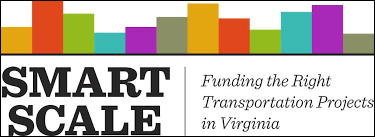Republican legislators in Northern Virginia (the few that are left) are wondering what happened to Virginia’s Smart Scale mechanism for allocating transportation dollars. Smart Scale was established during the McAuliffe administration to score proposed transportation projects on key metrics such as congestion relief, economic development, safety, land use, and the environment. But somehow 84% of the transportation dollars raised through Northern Virginia regional taxes were directed to transit projects, assert Del. Dave LaRock, R-Loudoun, and Del. Tim Hugo, R-Fairfax. Only $8 million per year of the $200 million in state funding has gone to highway projects.
“These recommendations are nothing short of outrageous and demonstrate beyond any shadow of a doubt that SMART SCALE scoring is failing,” said LaRock in a prepared statement yesterday. “It is not following the legislative mandates imposed by the Virginia Legislature in 2014. Northern Virginia’s notorious congestion will not go away if 70% of the estimated benefit of projects comes from Land use, Economic Development, and Accessibility, with another 18% from Environment.”
In a letter to Virginia Secretary of Transportation Sharon Valentine, LaRock and Hugo requested a thorough review of the Smart Scale scoring process, which was legislatively mandated to give congestion mitigation the greatest weight in the scoring process.
Wrote LaRock: “I am pressing for a thorough revision to the Smart Scale process to significantly increase the weighting of congestion relief and get this rating program fixed and functioning so our precious dollars benefit drivers and not developers.”
Bacon’s bottom line: I don’t know what to make of this. The purpose of creating Smart Scale was to take the politics out of transportation funding by providing the Commonwealth Transportation Board objective metrics by which to judge a project’s worthiness. The impetus behind the initiative was to create a more effective tool for combating traffic congestion.
Several years ago, the General Assembly enacted three regional taxes — a Sales tax, Grantor’s tax, and a Transient Occupancy Tax — with the goal of raising $300 million a year to be spent on Northern Virginia transportation projects. As I recall the politics of the time, political support was derived from the expectation that most of the money would be dedicated to addressing traffic congestion.
I do find it remarkable that 84% of Northern Virginia’s regional funding is going to mass transit. It’s conceivable that building a mass transit capability is the best way to tackle traffic congestion — after all, building new street and highway capacity is incredibly expensive. On the other hand, it’s also possible that Smart Growth/mass transit constituencies, which may include real estate interests that want to develop land around the Silver Line’s METRO stations, have worked behind the scenes to stack the Smart Scale methodology.
I just don’t know. The media doesn’t attend CTB meetings anymore, so no one has been reporting on the deliberations in Richmond. Whatever the truth of the matter, I sense that LaRock and Hugo have identified a politically potent issue for the vast majority of Northern Virginians who don’t take mass transit.


Leave a Reply
You must be logged in to post a comment.